#fauna imperialiste
Explore tagged Tumblr posts
Text








#metafora me kafshë#zoon politikon#Namik Hoti#Namik Vehbi Fadile Hoti#bar do hamë#bar do hanë#barngrënësit#Enver Hoxha#origjinali në anglisht#fauna imperialiste#kafshërimi i kundërshtarit#fjalë të urta me kafshë#parabola me kafshë#Sali Berisha#shpella berishiane#fauna raciste#banesa e kafshës#party animal#rropullitë#kali#fauna e tranzicionit#ia hip kalit#zbritja nga kali#kafshë në antropologji#fauna krahinore#flashback#profetizime me kafshë
0 notes
Text
That Speculative Analysis About Irkens No One (Originally) Asked For: Part III
Hey! Huge thanks to everyone who took an interest in the first two parts of this fun I got into about Jhonen Vasquez’s funny green guys. I didn’t really expect to kind of rebound back into this old flame the way I have been lately and it’s actually a pleasant surprise that other fans have been getting something out of it and enabling my latest thinkworms.
Check out the part one of this extended analysis here, for broad tids and bits about Planet Irk and the mention of its inhabitants being basically cyborgs.
Part Two, takes on Irken physiology and focusing on their tissue differences from humans, here.
So alright, I’ve been holding this one in since the very start. Previously, I brushed the topic of the control brains, and I’ve sorta gestured acknowledgement toward the Irken obsession with height. Now, I’m really ready to get some thought goo flowing all over and in the crevices of the matter of Irk’s power structure, and, perhaps the one social W that this marauding pack of space imperialists get to claim.
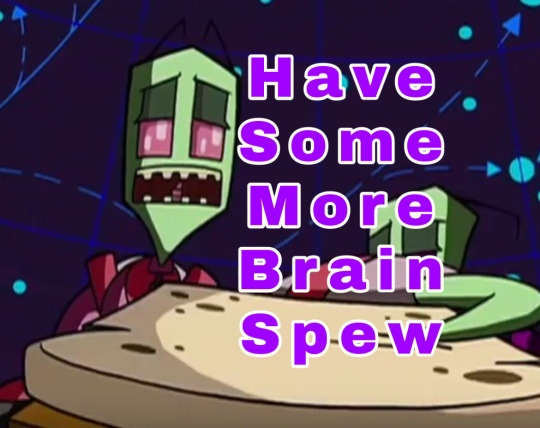
Bearing no further ado, let’s talk about the Tallest. Can we talk about the Tallest? Please Mac, I’ve been dying to talk about the Tallest with you all day.
I’ve said once and now repeated twice that I think the canon implied that the homeworld of our favorite invaders is dummy thicc; consequentially, it’s left a lasting ripple on the evolution of their species as well.
Planetary gravity has a ton of invisible effects on the skeletons of large fauna, to the point where it’s the main thing that you, filthy Earth creature, can shake your own fist at it for taking a huge slice of the blame behind the prevalence of back pain in upright hominins. All that downward tug can really wear a spine down good over the years. In fact, would you believe that astronauts actually grow a smidge taller in Zero-G environments? Legit. So… use your brain and consider what we could have ended up looking like with our same bone structure, but many times that compression.
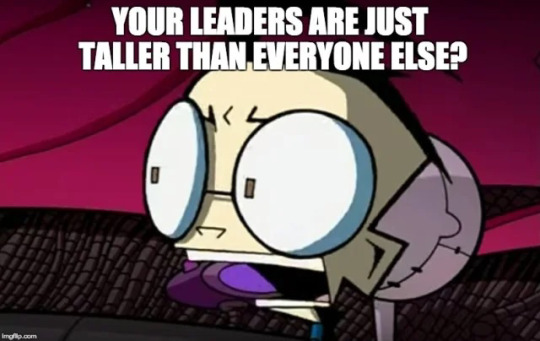
You take that mental path, and suddenly, height outcomes may not seem like such an arbitrary measure of general survival fitness after all. Especially in the days before the Irkens represented an intergalactic super power. It may seem counterproductive in their modern intelligent society, but no doubt this aesthetic affinity is something that runs much deeper ingrained than practical programming. Respecting tallness is something Irk takes on dogmatic intuition- to the fault of barely being able to comprehend the notion of another species being both tall AND intellectually primitive.
Nevertheless, I pose that the connection may also be more than traditionalism, and not so vestigial after all. My reasoning suggests that The Almighty Tallest are in fact, not randomly born… they’re planned and made by the real overlords sitting atop the pyramid. And even so, they have existed in the species long, LONG before the PAK even did.
• Caste Polymorphism & Bug Stuff
The insectoid inspirations of Zim’s kin are something so obvious they really need no recapping, yet, I’m pining to make a more specific comparison. Some people like to go for wasps or bees, but if you ask me, the roving militarism of the armada is begging for the ant metaphor if anything.
And I got a hell of a species to whip out that you’ve probably never heard of.
A quick context breakdown- Polymorphism is another one of those long biology terms for a pretty simple concept: when one species has different distinct forms or types of forms that appear in its population. And it’s not talking about continuous spectrum differences like height alone. It’s talking about when animals/plants can have one gene with different possible phenotypical presentations. One good example (in humans no less) is the existence of different blood type groups. One of my absolute favorite cases, by the by, is in Side-Blotched Lizards. The females are samey and look pretty generic, but the males deadass come in 3 completely differentiated color variants, all of which are playing a perpetual game of rock paper scissors with the other two for breeding success.

And this kind of phenomenon of course gets way less subtle in the insect world. Everyone here probably knows the simplified version of what a colony critter’s caste system looks like, with sterile female workers, breeding done males, and one big fat queen at the top, pumping out replacements for the other two. This is the part where I tell you it’s a hell of a lot more complicated, weird, and varied than that, actually.
Consider army ants, as I see them, the most Irk-ish of real world animals. Some fun facts on the most notorious handful of species below:
+ Nomadic by nature, they do not build any form of permanent hill or nest, and instead make temporary pit stops inbetween periods where the entire colony swarms along the forest floor in search of resources.
+ Army ants are aggressively predatory and forage in the style of legion-like “raids” that overwhelm their prey with sheer numbers and speed.
+ These raids often take shape by way of linear traffic columns that guide the direction of the swarm. This is because the ants have poor vision, relying on following the paths of the scent trails of the workers that are spearheading the legion.
+ Eciton burchellii, in particular, demonstrates a stark example of polymorphism by way of a rigid caste hierarchy. I.e., The non-reproductive colony members are divided into 4 sized tiers of worker. From smallest to largest there are minors, medias, porters (sub-majors), and soldiers (majors).
And let me tell you… the difference between the Soldier (major) caste and the rest of that batch is a pretty surprising gap.
This is what ONE major-type ant looks like hanging out with colony mates from the lower worker castes.

Oh wait, getting ahead of myself. Ahem… sorry, I meant THIS is the image I was referring to:
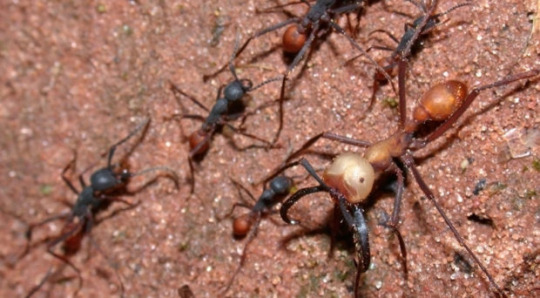
Not only is that obviously the bossiest bitch of the bunch, but she has some pretty cool features unique to her status… The more spidery looking body shape and those absolutely wicked mandibles being a standout.
You know what drop I already had coming, so I’ll cut to the chase.
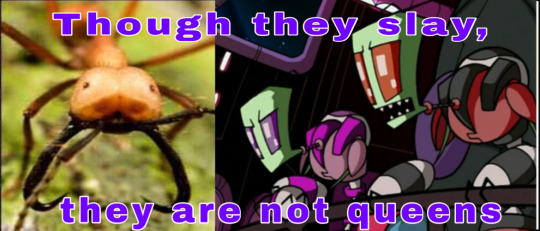
It’s clear that the Almighty Tallest are NOT the Irken equivalent of a hive queen. They are not drones, either. Besides the glaring fact that they are non-reproductive individuals, the role they serve in Irken society has very little if anything to do with running the day-to-day lives and functions of the larger population.
Instead, we have always seen them (and would have seen them more in the unmade episodes such as The Trial) involved more with the military front of the empire. Tallest Miyuki’s one known planned appearance would have featured her overseeing the military research happening on the Vortian base. Tallest Spork’s brief entrance (and exit) was planned to take place on Devastis, where he addressed those who were being evaluated to join the elite ranks of the armada. And our very own iconic duo have,
also,
never even once been seen on their home planet since their introduction. Their first appearance? Conventia. Ever since? Aboard the Massive, where they directly command and supervise the operations of the active invasions.
Why, the Almighty Tallest in all cases… these aren’t emperors at all, they’re generals! Sure, they have power, they have reverence, but even they must obey the final judgement of a Control brain at the end of the day. The same brains that grant them their status in the first place. Note, in real ants, the mechanics of how exactly any one egg is differentiated into its decided caste, from worker to queen, and all between, is… to say the very least, really fucking complicated. And all over the place. Broadly speaking, it’s a mix between genetic potential and nutrition during development. In some species this determination is near entirely up to the whims of DNA, and in others, it does come heavily down to how many protein shakes the colony decided to give their brood that day.
For the purposes of this hypothetical, I’m going to assume the people of Irk fall somewhere in between those two polar options. Now, being a futuristic network of coordinated supercomputers using cloning tech, the control brains have a more precise handle on the gene pool/diversity of their underlings than anything possible with natural breeding.
Let’s also assume they record and monitor the current population of each potential class of irken (they literally assign and code the PAKs’ occupational roles themselves). With each batch of smeets, they can predetermine certain percentages aside with the potential to fill whatever roles need replacing and expansion… keeping the genetic height markers attached for those downline to understand who should be looking down on who. Ergo, not ANY Irken can one day become the almighty tallest, but within each generation of smeets produced, there are potential candidates hidden among the upper ranks of would-be soldiers.
This way, the sudden death of the current armada commander would not disable current operations or throw the offensive lines into utter chaos for years on end. The Control brains need only select out the cream of the crop from their “proto-Tallest” and then cue their body (via diet or hormones) to switch the proper genes on, get a new growth spurt going, and complete the metamorphosis into their true potential.
As for why they seemed to break a historical precedent and jump for a two-for-one special in Zim’s generation… yeah, I’m not sure about that really. There could be a link between that and the very sudden death of the two previous tallests in a row, but ¯\_(ツ)_/¯. It could just be a remarkable coincidence that Red and Purple were decided to be equally viable successors. Or, Operation Impending Doom could have been deemed an ambitious enough endeavor to warrant the appointing of two regents at once, given the scale of Irk’s expanded army for the purpose.
So, that’s it, then? The Irken species became so reliant of their technological advancement that they have casted aside and replaced every bit of their natural life cycle and order some
computer deemed inefficient? Substituted the seat of their leadership and even their ability to procreate with the soulless calculations of their AI programs?
:y Well, yes, but actually no.
• Long Live the Cyberocracy!
When I said in part one that Irk was on track to eventually make the jump from cyborg citizens to an entirely mechanical or digitized lifeform, I was doing a ponderous thinking thing. I was supposed to just be speculating, and then I find out the most mind blowing revelation while doing the research for this bad boy- those alien bastards already did it. The madlads/madlasses… So, living Irkens DO actually run the show around here, hiding in plain sight this whole time.
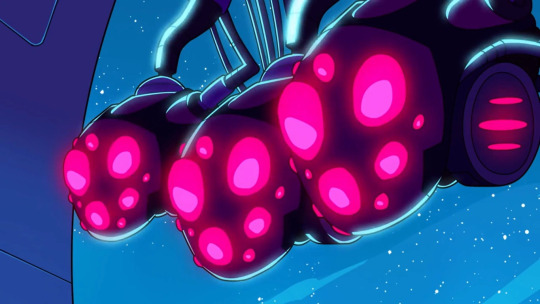
I am still desperately searching for confirmation of the rumors I heard that Vasquez himself has said what I’m about to share, and I deeply appreciate anyone who can give me that as well. Even if this turns out to only be fanon, I’m still in love with this interpretation anyway: Within the Control Brains are the preserved consciousness of Irkens who have achieved this evolutionary end stage. WHO are they exactly is… honestly anyone’s guess. The important part being that they no longer have need of their meat suits to survive any longer and now exist as these hulks of nerve and metal.
Be this what it looks like to me, and it would be certain that this is actually the most coveted and honorary fate of any single Irken- immortalized and given a status on par with deification over the most powerful imperium the cosmos has ever known. Perhaps this was the path of particularly accomplished Tallests of the past, who had their paks integrated into the core of a fledgeling new control interface. What better way to commemorate those who have fallen in the highest level of glory? A single “brain” could in fact even be the summation of multiple beings, making example of the greatest the species has to offer and what all should be striving for. Conversely, the greatest punishment of their kind is the opposite- to be forever deceased, forever forgotten, forever excluded from this collective transcendence:
Damnatio Memoriae.
(But like… in a kids’ show)
There’s no clear estimate on how many control brains exist in the franchise, there are at least four that we have seen on screen, one on Devastis and the others within Judgementia. Probs safe to assume there’s at least one permanently built into the infrastructure of any planet of key enough importance to the Empire. Interestingly, lost scripts and show canon make numerous references to them still having gendered pronouns and voices when addressed individually.
Though, now that I think of it, that’s also really interesting that the same is true for the worker castes, too.
• Putting the “Trans” in Transirkenism 👉😎👉
When a worldbuild goes so far as to explicitly confirm a completely sexless, alien race of neuter cyborgs, the existence of a human-like gender binary starts to beg for some kind of explanation. You can’t just “suspension of disbelief” it aside the same as you can the fact that English is the most popular first language across the Galaxy.

Oh, lookie, it’s one of my favorite things to think about when toying around with postbiological concepts/philosophy. I knew there were even more reasons transhumanism always seemed like such a cool sci-fi trope, from the endless possibilities in imagining the badass super powers, to the worlds of knowledge, and to the absolute social equalization that would all be unlocked in a cybernetic future. Well, that future is already comfortably in the hands of Irk, and whether intentionally or not, it has apparently brought them to the threshold of not just a postorganic, but also a post-gender society too.
A feminine and masculine variation does still exist in the form of small aesthetic differences- voice, antennae shape, pronoun usage, and eyelashes- but is now so far disconnected from the original associated sex roles that the distinction might as well be no more than a cosmetic preference. While “female” irkens are seen much, much more rarely than their counterparts, neither gender is treated differently from the other, and both have been spotted in occupations all the way up to invader elite and the Almighty Tallest.
This is a blending, of course, far beyond the insect-like caste system that itself did survive to the modern day, and that shows some truly impressive progress from what I imagine they were doing before.
Army ants, like all eusocial insects, are matriarchal; as in, where the females run the colony from top to bottom, while the males lead short runs of being mutilated by the workers, mating with the queen, and then dying shortly after.
In this headcannon narrative, it was almost certainly the male-associated gender Irkens who were liberated by the technological jump.
And that’s all sum purdy neat food for thought, huh ! ?

#iz headcanons#invader zim#irkens#xenobiology#iz analysis#iz#nicktoons#long post#new world army ants#cool bug facts#scarlet talks about things#more like becomes possessed by them#YOU WANT THE SCOOPSIES YOU GET POTATOES#we hyperfixating#lord help me#thanks for coming to this ted talk#you know for kids!
97 notes
·
View notes
Text
ATLA/Kong: Skull Island Crossover Idea


I'd personally like to blame @snoopyflinx for this.
As anyone who's been following me knows, I've been writing an ATLA/Godzilla fic. It should come to no surprise then that eventually I'd have to talk about Godzilla's rival from across the Pacific. I've already talked about King Kong once in the past in a post where I discussed the identity of the original predatory dinosaur that Kong fought in a fight to the death. So I figured it was high time I returned back to the great grandaddy of the kaiju genre.
Now to begin, we need to break down what not only Kong: Skull Island is about, but also the original and the rest of its series so we can come up with an organic combination that taps into both stories. So expect some references and appearances from older entries (since I am a huge lore nerd and like to reference as many entries as I can). And one of the most recurrent themes in both is the charming tappings of...
Part 1: Colonialism
Yeah, as much as I love the original 1933 King Kong, part of the inspiration came from old colonialist texts and stories. You know the ones: hero ventures into an untamed wilderness, sometimes discovering a lost world filled with savage natives and vicious animals to bring something back and thus "conquer" nature. It's a tale as old as time and has tappings into various real-world expeditions where explorers surveyed wild areas for exploitation by foreign powers. Hell, the idea of living dinosaurs is one of these common stories that I've talked about in the past.

Now for anyone who's ever watched ATLA, they should know that the show has a very anti-imperialistic, colonialist message. Mainly that the militaristic, imperial Fire Nation are the bad guys and need to be opposed. Basically the opposite of those old-time adventure stories I mentioned. So to faithfully crossover ATLA with King Kong, we need a message that deals with imperialism.

Kong: Skull Island gives us an edge here. Skull Island, while dangerous, isn't depicted as a hellscape. The fauna are dangerous but aren't as savage as any other real-world animal. And the natives, while wary of outsiders, are accommodating to the heroes and are seen in a dignified, sympathetic light. This goes hand in hand with ATLA since most of the dangerous animals encountered are usually portrayed as just animals, while Katara and Sokka themselves come from the "savage" (in the eyes of the Fire Nation) Southern Water Tribe.
But hey. Let's play around a bit and give our Skull Island a bit of a reputation for being a place where everything is trying to kill you and being the very worst that nature has to throw at outsiders. Which brings us to-
Part 2: Heart of Darkness

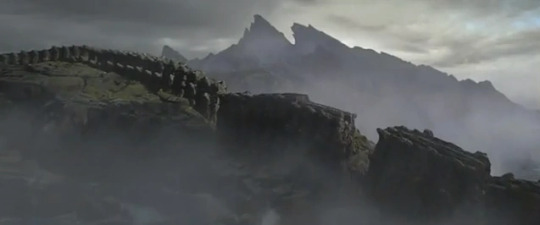
The Heart of Darkness by Joseph Conrad is a highly regarded novella that basically takes the piss out of a lot of these colonialist adventure novels. One of the core themes is that it examines whether or not colonials are truly better than the "savages" that they fight. In this case, they aren't. Hell, they're arguably worse since they enslave natives, encourage violence in tribes, and any "savagery" on the part of the natives is a reaction to the violence and carnage the colonials bring.
This comparison is not a coincidence. The Heart of Darkness was a big influence on the Vietnam War film Apocalypse Now, which in of itself was a big inspiration for Kong: Skull Island. So since Heart of Darkness is basically one big anti-imperialist work, something similar (if not so extreme) could work for ATLA if we decide to go the crossover route with Kong.
To begin: let's put our Skull Island somewhere around here-
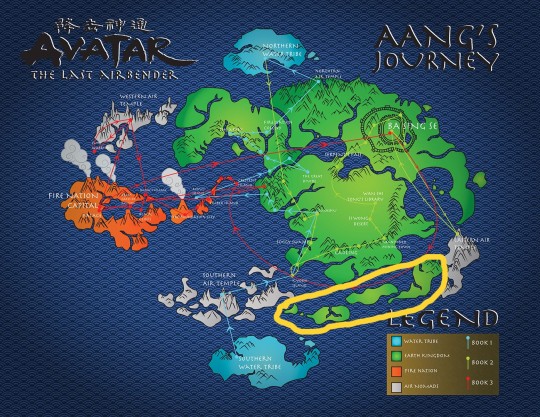
What I'm thinking is that Skull Island would work on one of these unexplored islands that canon never touched. And we have an impetus for why the Fire Nation would want get involved with this chain since they have a direct route to Ba Sing Se. So there's an impetus for them to do something like establish a naval base on one of the islands to secure this critical invasion route.
Their problems start before they even see the island though.

Skull Island is surrounded by natural defenses in almost all adaptations. In the original and Peter Jackson remake, we have a thick fog which hides the island. Which in the remake becomes disastrous since the S.S. Venture almost capsizes on the very large stone pillars and rocky outcroppings. Kong: Skull Island is even worse since it has a huge storm system which only small pockets offer any safety and any chance of going to and from the island.
I could see a number of ships being disabled before they step foot on the island.
For the natives, I would have them be the more sympathetic version we see in Kong: Skull Island rather than the more racist depictions we've seen in previous films. Not that it would help them much since the Fire Nation has steamrolled through native populations like this such as the Southern Water Tribe. The natives could fight back, but they never did too well in the older films when up against modern weaponry.
No, the absolute hell of Skull Island won't come from the natives.
See...the Fire Nation has had...issues when it comes to giant fauna. They struggled against the serpent in the Book 3 premiere, and that was just a single animal. And while it easy to argue that they exterminated the dragons, that was a single species. We're talking about...well...
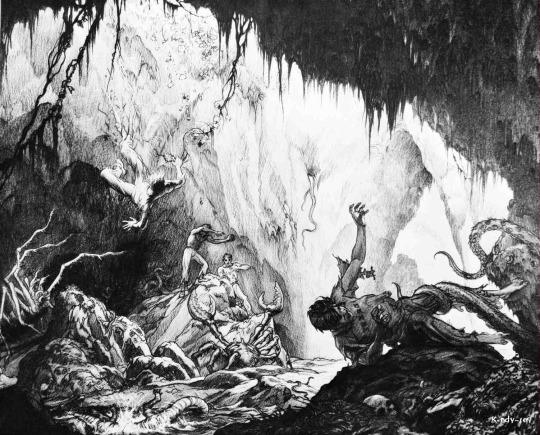
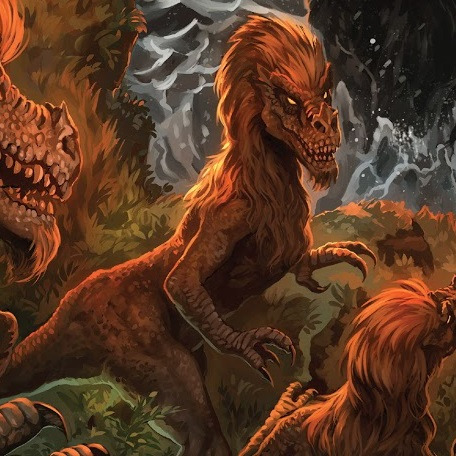


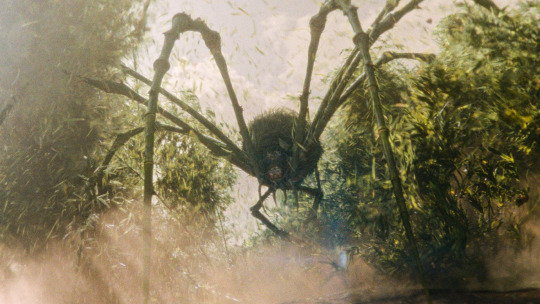

One of the recurring elements of Kong films is that Skull Island has an entire ecosystem that seem dead set on killing humans. We're talking giant bugs, huge insects, and massive dinosaurs. And we haven't even gotten into the big heavyweights like the Skullcrawlers and Kong himself. Even if the Fire Nation can handle one or two of them, this is a whole ecosystem.
While I wouldn't have the fauna being murderous like in previous films and be more like Kong: Skull Island, the Fire Nation policy of "burn everything in sight" is going to give them that experience from hell the older films presented.
Oh, and if somehow they do survive all of this...
youtube
Kong takes his duties as ruler of Skull Island very damn seriously and basically annihilated a war-hardened army group the moment they raise shit. Cause like in the series, even the most elite of the Fire Nation can't stand up to the forces of nature. Hell, Kong would probably crush any mechanized forces the moment they raised a ruckus, leaving everyone else to the predators of the island.
At most we might see a ruined fortress by the time Team Avatar gets there. Any remains would've been reduced to dino food.
Part 3: Team Avatar Gets There

The reasons for why Team Avatar would arrive at Skull Island would be a bit more varied. Maybe they heard there was an unknown island off the coast of the Earth Kingdom and wanted to see it for themselves. Maybe they were chasing some rogue Fire Nation army group or wanted to investigate just how the hell an entire army just disappeared in the past. Who knows?
Sokka would obviously take charge, seeing that they were effectively in the middle of nowhere. Probably already drawing up plans to find a good position where they can safely land on Appa (within reason of course). Once they actually look around and see that they are basically on the bottom of the food chain, he'd probably be the one who'd suggest NOT enraging any of the big fauna needlessly for no reason lest they find themselves always on the run.
Zuko would be the opposite. He's the hothead and would probably see something like a young Skullcrawler or a Vastatosaurus as some kind of obstacle that needs to be conquered. You know, since he was raised in the militaristic Fire Nation. Of course, he gets some humble pie since these things aren't exactly just big targets to throw fire at. Maybe he even comes across some base ruins or the graves of some Fire Nation soldiers. Make him realize just how out of their element his people were and reevaluate whether or not unrestrained aggression is the appropriate response here.
Toph on the other hand would love Skull Island. She's the chaos gremlin and would probably enjoy seeing all the giant dangerous animals stomping around. I mean she was taught by Badgermoles, so she might be more comfortable around big fauna than most. That and the endless amount of adventures a whole new land would provide.
Katara would connect the most with the natives. Again, they're not that "savage" here and she'd probably connect with their past of being subjugated by the Fire Nation and living on what basically amounts to the frontier. She could probably even admire their stalwart attitude towards the various horrors that Skull Island would provide.
That leaves us with Aang. Knowing him-


That boy is riding the Brontosaurs and nothing anyone says is going to convince me otherwise. Them and the Sker Buffalo. You telling me he won't try to ride a distant relative of Appa?
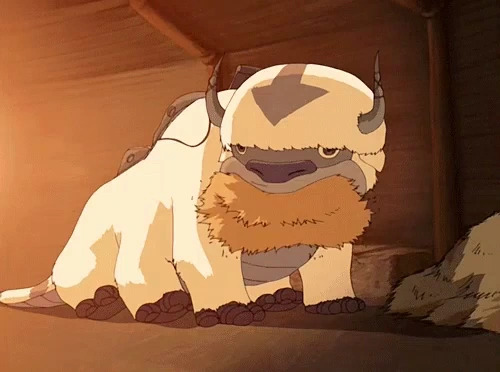

He'd probably be the best around the animals of the island, recognizing them as animals, not monsters.
But I think his most interesting relationship would be with Kong himself.


Simply put, they're the last of their kind. Aang is the last airbender. Kong is the last of his species. And both of them have been saddled with the enormous responsibility of maintaining a sort of balance on the island. It's why I brought up the force of nature thing earlier since Kong is basically Skull Island's answer to the Avatar. It's a sort of parallel that Aang could see and connect with Kong over. Cause in many ways, Kong also serves as a foil. Aang is carefree and funloving. Kong is more serious and refined. That and both of them technically are kids who were forced to grow up (Kong was described as being a teenager and still growing if I remember the interviews correctly).
Speaking of teenagers being forced to grow up and monsters...
Part 4: Monsters

Yeah, I had to give a portion to Azula. How she ends up on Skull Island might vary. Maybe she shipwrecked there. Maybe she's on the run and headed there cause nobody would be crazy enough to even try. She'd basically be the other side of the coin Zuko was on: being forced to fend for herself on an island full of predators but without a support system.
This could lead to some...pretty interesting scenarios and confrontations she has with the island's animals. Like, her running into a Vastatosaurus, a Skullcrawler, or a Deathrunner would be a pretty fun scene to write. That and depending on her mental health, we could get some interesting scenes with Hallucination!Ursa that expands that aspect of her character.
But I think the big element of Azula's arc is...well, showing that she's not a monster. She's human, and have that reflect on the Skull Island animals. I've mentioned it before, but I wanted to go with the direction Kong: Skull Island took and make the creatures more sympathetic by showing more sides to them rather than vicious predators.

Take the Venatosaurus from the Peter Jackson remake. Fast. Intelligent. Vicious. Just like Azula. But one thing that the film never got a chance to expand on was that they actually live in close-knit family groups. All adults take care of the juveniles together, raising them, feeding them, and protecting them. They never leave the nest unguarded. I think a scene of a pack tending their nest and being sociable would show that if something as vicious as them can have a soft side, why not Azula?
Then there's Kong.

I think Kong could work as a foil to both Aang AND Azula. Kong was the teen forced to become an adult, just like Azula. And like Azula, he has baggage when it comes to his parents (mainly that they died and not because they were abusive or neglectful or anything). As well as having an enormous responsibility on their shoulders (King of Skull Island, Princess of the Fire Nation). Being seen as monsters despiting being more than just mindless killers. And who knows? Maybe Azula could connect to Kong in a similar way that Aang did.
Conclusion:
My thoughts on an ATLA/Kong story goes a few ways. First, it should deconstruct imperialism just like Kong: Skull Island and ATLA did. It should also show that Skull Island isn't just hell on earth and that the animals and people are more than just something to be conquered or destroyed.
All in all, it has a lot of potential. I'm not sure if I'd write it myself since I already have a few ideas down the pipeline. But feel free to take some inspiration if you want to explore the idea yourself.
#atla#avatar: the last airbender#aang#katara#sokka#zuko#toph#azula#king kong#kong#kong: skull island#king kong 1933#king kong 2005#fanfic ideas#fanfiction ideas#crossover idea#long post
21 notes
·
View notes
Text
Worldbuilding in Five
I was tagged by @kaylinalexanderbooks ! Thank you!
So last time I introduced you all to Labisa, the birthplace of Ninma and where Narul spent most of his early life (he was actually born in the city of Syshlum). For this round I will introduce you to the birthplace of Ninma's cousin, Akard.
The City of Nashawey, the Jewel of the Putla.
I hope y'all are ready for a lot of lore dumping, this is more a history of Apuna as a whole rather than just Nashawey.


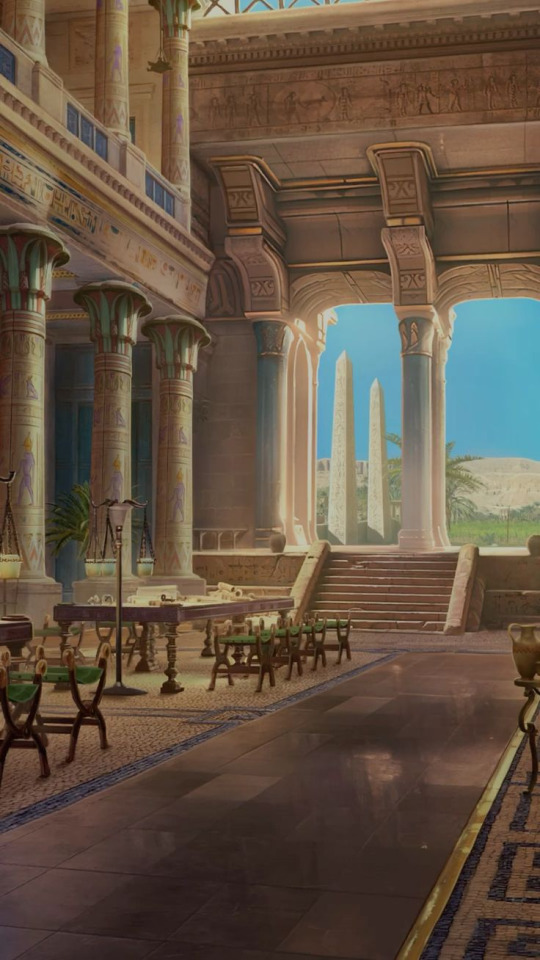
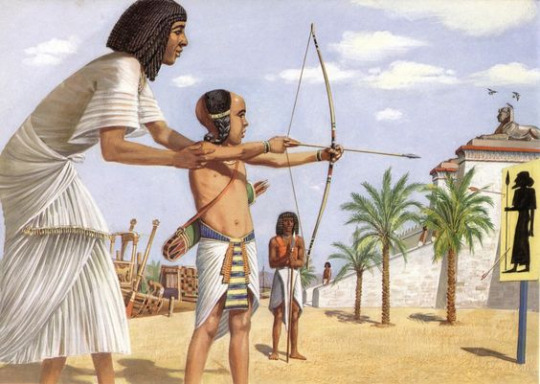

Nashawey (Apunian Nashases = Royal name, Wey = City/Village) is the largest city in both the land of Apuna and the entire continent of Pyritia. Its population is roughly equivalent to that of Labisa in Kishetal, though the city itself is less densely populated and covers a far larger area. The city sits at the southern edge of the Putla Delta, where the great river forks into Dja, Wadi, and Bus. The fertile and reliable nature of the Putla has allowed Nashawey and by extension the kingdom of Apuna to retain a level of prosperity and stability unmatched among the other cultures of the Green Sea. A Fapacha has ruled from the throne of Nashawey, or else from one of the neighboring cities, uninterrupted for approximately 4,300 years (save for a 30 year interruption in which a Namutian successfully seized the Apunian throne, the Namutian Dynasty has been almost entirely erased from all records and history), representing the reigns of 223 rulers (189 Men, 34 Women).
The Apunians are among the oldest civilizations in the world and their origins are linked to the confluence of several prehistoric populations.
After the events of the Calamity and the subsequent destruction of 92% of all human life and the complete destruction of all non-subterranean settlements, most surviving humans dwelled within the mountain sanctuaries of a number of kindly spirits over a period of roughly 300-500 years.
The Apunian culture has roots in three of these mountain populations, the Red Cedars, The Babics, and The Pyrians in addition to several southern Pyritian populations. This also means that the Apunians are distantly related to not only their Pyrian neighbors but also the original inhabitants of the Kishic Peninsula.

The first people to inhabit the land that would later become Apuna were primarily hunter-gathers. These tribes and bands were highly spiritual and interacted regularly with spirits and had dealings with the various beasts and monstrosities which shared their environment. At that time the region was far more lush than it now is, and supported great herds of fauna and a startling array of plant life. It is in this era that the first inklings of the later Apunian medicinal, cosmetic, and potion-making tradition were developed. Climatic changes gradually dried up the plains and marshes of northern Pyritia, in time forming the sweeping Kusr Desert.
These changes forced the gradual separation of the Hunter-Gathers into distinct groups. The Peri peoples traveled west, settling on the strip of land between the Pyrian Mountains and the Green Sea Coast, they are the ancestors of the modern Pyrian tribes.
Others ventured south mixing with southern populations, either embracing a desert lifestyle or settling along the eastern plains and coast of Pyritia, these groups, collectively called the Namutians and Aguru.
A small group took to the sea, settling on the island of Knosh.
The last and largest group settled on the banks of the Putla River, where the verdant environment of the Pre-Desert era was preserved. These Proto-Apunians quickly adopted an agricultural lifestyle, forming some of the first wide-scale settlements in the Green Sea Region.
These Proto-Apunians were composed of four distinct kingdoms or "Namu", each ruling one branch of the Putla; these branches now bear their names; Dja, Wadi, Bus, and Putla.
Feuds between the rulers (Pachas) of these kingdoms was commonplace. 400 years of near constant warfare and bickering between these lands would end with the imperialistic ambitions of the ruler of Putla, a man by the name of Nabur. Nabur, alongside his beloved son, Nashases, would lead an attack on the other three Namu, with intention of conquering them and thus uniting the Apunian people.
At the Battle of the Fork, Nabur and Nashases clashed against the other three kingdoms, and though outnumbered it is said that Nabur had earned the divine approval of not only the governing spirits of the River but of the Gods themselves. Legend tells how the river itself rose from its bed and swept away the Pachas of the other kingdoms. This story may actually have some grain of truth as it certainly does seem that the Fapacha is closely associated with the spirits of the river, just one source of the throne's great authority.
While victory was won for the Putla it came at a great price. Nashases was slain in the conflict. Heartbroken, Nabur buried his son where he fell, ordering the construction of a massive underground complex. In order to protect his son's body from desecration he then built his own palace atop his grave. The city of Nashawey or the city of Nashases, spread out from there.
Nabur named himself the first Great Pacha or "Fapacha" and dubbed his newly united kingdom, Apuna, which stems from the Apunian word Apna which is roughly translated to "Unity through Duty."
The Fapacha and his line is believed to be divinely ordained and Apunian faith dictates that upon their death, Fapachas will join the divine council held responsible for the judgment of the dead.
The greatest symbol of royal power in Fapacha is the Royal Scepter. Made from meteoric iron, mahogany, gold, and most importantly; Arkodian Bronze, the exact origin of the snake shaped weapon is unclear, that it was first held by the 10th Fapacha, Ankuwet. In addition to being made from such precious materials, the weapon houses a fire spirit, allowing its user to conjure flame at will. It is among the last remnants of an ancient tradition among the peoples of the Green Sea for royalty to pass down magical weapons. This staff gives the Fapacha one of their aliases, The Lord of Fires.
Apunian civilization is almost entirely confined to the shores of the Putla river, with the desert being only very sparsely occupied by nomadic groups.
Following in the tradition of Nashases, Fapachas are renowned for their massive underground tombs, called Djawda. Labyrinth-like mazes carved into the stone of the desert are meant to deter robbers from breaching the tombs. Often these tombs include artificial rivers and depictions of the night sky. Hundreds of workers are required to excavate these huge structures.
Every major city in Apuna contains at least one palace, meant to act as the residence of the Fapacha and his family when visiting. Apunian palaces are relatively small compared to their neighbors to the north, however they are no less luxurious. It is common practice for new Fapacha to dismantle and reconstruct palaces to better suit their own preferences after taking the throne. The grand palace at Nashawey is the one exception. The palace at Nashawey is unique in that it is primarily constructed from stone rather than mudbrick.
The largest structure in Nashawey, is the famed Gateway. This massive structure stretches across the Putla River where it acts as a sort of tollbooth but also as a defensive structure. The Gateway was constructed by the Fapacha Rutamatep five-hundred years before the events of The Testaments of the Green Sea. The gate itself is composed primarily of sandstone and marble with heavy gilding on its columns. Carvings depict various stories and battles from both the Fapacha who ordered its construction and his successors. It is not unusual for Fapacha to have the carvings of their predecessors chiseled away in order to make room for their own pieces. The Gate is the first thing that visitors see upon entering the city.
Nashawey is home to 45 temples, which double as administrative centers, the largest of which is dedicated to the god, Nur. The all male priesthood of Nur, the god of agriculture and the divine seed, are forbidden from marriage or intercourse with one exception; they may marry and sleep with each other. Marriages of the Priests of Nur are treated as religious events, with both priests dressing in the garb of the God.
Apunian fashion is very bright and colorful, most Apunians wear at least one kind of jewelry. Gemstones are very popular in Apuna, especially as a part of jewelry and woven into clothing and hair-beads. Apunians are also the only major power in the Green Sea that regularly utilizes makeup/body paint. Cosmetics (as well as perfumes) are a major industry in Nashawey. Additionally Apuna is renowned for just how much gold it uses and has access to, even poorer Apunians are likely to have at least one golden bauble. It is said that even an Apunian beggar will sparkle in the sunlight. Most clothing in Apuna is made of colored linen, Apunians are famous for just how vibrant their dyes are. Textiles, alongside grain, are the biggest Apunian exports.
The city lacks the great defensive walls of Kishite cities as in a sense, the desert acts as a wall in and of itself, thus why the Gateway defends the river.
Apuna is famed not only for the skill of its plantbrews, but also its sages. As a result the city of Nashawey has entire districts entirely dedicated to these professions. Apunian potions and medicines are widely viewed as the best in the Green Sea.
Aside from the palace the city is divided into 45 separate neighborhoods or districts, each of these districts is constructed around a temple/administrative center to which taxes are distributed.
Tagging @illarian-rambling , @wylanzahn , @roach-pizza , @treesandwords , @mk-writes-stuff , @americanfemcel , and @abalonetea
#worldbuilding#worldbuilding in five#tag game!#testamentsofthegreensea#fantasy#fantasy writing#fantasy world#world building#writeblr#writing#fantasy worldbuilding
17 notes
·
View notes
Text
Designed by architect Albert Laprade, the Palais de la Porte Dorée, whose construction began in 1928, stands at the entrance to the vast space designed to house the 1931 Colonial Exhibition in Paris. [...] [Its] style was a perfect example of a colonial modernity [...].
The display of riches extracted from the colonies, and the depiction of people bent over working, busy doing a thousand actions destined to enrich France, make up the Palais de la Porte Dorée’s 1,200-square-meter façade. It was realized at a time when many cracks were showing in the colonial empire, and when anticolonial groups in France and Europe were honing their arguments. Far from the peaceful image of worlds laboring to enrich France portrayed on this façade, [...] [t]he 1931 International Colonial Exhibition fabricated an illusion: that of a successful pacification and a working empire. [...] The government wanted to impress and dazzle the public [...].
A veritable tour de force, in a day, the public could visit Angkor Vat, Timbuktu, the palaces of Niger, or of the Queen of Madagascar. These monuments of vanquished civilizations -- now “French possessions” -- proved that access to fabulous riches had been secured. The 1931 Exhibition glorified the French colonial “civilizing mission,” but behind this euphemism were assimilation policies based on dispossession, the Code de l’indigénat (Indigenous Code), which legalized various forms of discrimination in the colonies, forced labor, and exploitation. [...] The colossal aspect of the Exhibition only fleetingly masked these fissures. [...] By its very inordinateness, the Colonial Exhibition [...] inadvertently revealed the illusion that underlay the colonial project. [...]
---
In Europe and France in the 1910s to 1920s, Black, Asian, and Arab people organized, wrote, and mobilized. Examples include the Pan-African Congress in Paris in 1919 [...]. The constituent congress of the League against Imperialism and Colonial Oppression was held in Brussels in 1927. [...] [I]t was attended by representatives of the African National Congress, [...] Albert Einstein, Henri Barbusse [...]. Let us not forget either [...] the uprisings in Vietnam in 1908; [...] the 1925 revolt in Syria; or again in Vietnam in 1930. [...] Revolts and demonstrations demanding rights broke out throughout the entire French colonial empire, including [...] the demonstrations in Abéché (Chad) in 1917; the demonstrations of the people of Gabon and the Middle Congo from 1917 to 1918 [...].
---
As an institution, the museum partook in the invention of homogeneous, racialized categories (“Africans,” “Asians,” “Arabs,” “Europeans”) [...]. The Palais de la Porte Dorée’s multiple bas-reliefs [...] form a veritable “stone tapestry” and an imposing fresco of imperialist power. The work of sculptor Alfred Auguste Janniot (1889–1969), it constitutes a colonial encyclopedia. Entitled: “L'Apport des territoires d'outre-mer à la mère patrie et à la civilization” (“The Overseas Territories’ Contribution to the Motherland and to Civilization”), it is the only of its kind in France in terms of size.
In this bas-relief, a vast, diverse, and complex world is reduced to a flat surface on which these figures’ labor contributes to the greatness of France. [...] The colony as disciplinable “Nature” [...]. Humans and animals, plants and pirogues intermix and intertwine. Here, half a body emerges from the foliage; there a child perched on a woman’s hip hovers over a cactus. Further on, the name “Sudan” spills from a lion’s mouth. There is no social life, [...] the colony is “Nature.”
This disorder contrasts with its orderly finality: the anticipated export of products to France. But it is also a disorder that evokes the ordering of the world through colonization. [...]
---
The colony was a huge enterprise in taming fauna, flora, humans, rivers, forests, and mountains. Nothing was to escape the colonizers’ eye, or control. Everything had to be renamed, ordained, arranged, distinguished according to norms that reinforced an epistemology and imposed rigid binarities on worlds that had complex understandings of the living. Colonization was a project of control, possession, and transparency.
Thanks to this bas-relief, the French were given the impression of knowing everything about a world laying at its fingertips, that colonization offered them the entire diversity of the world, pacified, disciplined, subjected. [...] The Exhibition’s Jardin d’Acclimatation was an instrument of this organization; the public could imagine it was visiting the jungle, the savannah, tropical forests, and seas comfortably and safely. [...]
We also see the extent to which structures of racism destroy the possibility of living differently, [...] the imagination, that they stifle us, that they sever ties [...]. We want to retrace the cartographies of transnational and transcontinental resistance, to give voice [...]. We no longer want to be put under house arrest, confined.
---
All text above by: Françoise Vergès. “Decolonize the City.” e-flux Architecture (Appropriations series). May 2023. [All bold emphasis and some paragraph breaks/contractions added by me. At e-flux, Vergès explains, in an introduction, that this text “is a compilation of several extracts of the book De la violence coloniale dans l’espace public: Visite du triangle de la Porte Dorée (Of Colonial Violence in the Public Space: A visit to the Porte Dorée Triangle)“.]
#ecology#imperial#colonial#abolition#temporal#haunted#indigenous#french algeria#carceral#multispecies#carceral geography#tidalectics#caribbean#archipelagic thinking#intimacies of four continents#victorian and edwardian popular culture
27 notes
·
View notes
Text
Lilacs, or Syringa vulgaris, are beautiful, fragrant flowering shrubs that are native to Europe and Asia, but can now be found in many areas around the world. In recent years, there has been an increasing interest in using lilacs for landscaping, leading to its rapid global dispersal. However, this growing international presence raises important questions about how the introduction of these non-native species impacts local ecosystems.
The introduction of lilacs can have profound and unpredictable effects on local plants and animals. This is because foreign species often have no natural predators or diseases in their new habitat, allowing them to quickly outcompete native species for essential resources. The presence of non-native flowering plants can also disrupt the process of cross-pollination between native species.
Ecology is often thought of as the study of living organisms in relation to their environment. However, its implications go much further, as the impacts of foreign species like lilacs can have serious consequences for the local ecosystem. Experts warn that without responsible management and careful monitoring, the introduction of non-native species such as lilacs could lead to permanent changes in the local flora and fauna.
The impact of lilacs on local ecosystems highlights the need for increased awareness and understanding of the dangers of introducing foreign species. It is essential to consider the potential impacts of species introduction and whether such changes would be beneficial to the local environment before introducing new species.
In conclusion, the introduction of lilacs as a non-native species provides an important opportunity to think about ecology's imperialistic implications. Introducing non-native species can have an unpredictable impact on a local ecosystem, and therefore, it is important for individuals and communities to take into account the potential risks before introducing foreign species to an area.
0 notes
Text
Funny how all imperialists talk in the same exact way and also funny how animals that come from an imperialist country always take over smaller local fauna and kill it and take their spot in a destructive way...i connected The dots
0 notes
Note
How do I keep my 18th century man from trying to explore the high arctic? I've tried to distract him but it hasn't worked :( I feel worried about the risks
I assume this is a typo and you meant to say 19th century man? I still know a thing or two about late 18th century Georgians and early 20th century Edwardians because long nineteenth century and all that, but 19th century men are my main hobbyist interest.
That said, Lord Nelson fighting a polar bear (which allegedly took place in 1773 when he was a midshipman) in this 1806 painting by Richard Westall has caused so many problems!

You would think an early 19th century man would be unaffected by the siren song of the Discovery Service with the Napoleonic Wars still raging, but no! They really had Captain Philip Broke of HMS Shannon—yes, that Captain Broke—up in the arctic in 1807 chasing French warships that were harrassing British whalers, and also making new charts of the area with inadequate surveying equipment. (It's true, read "In Arctic Waters" by Michael Barritt in Broke of the Shannon and the War of 1812 ed. Tim Voelcker.)
Not even literature is safe—there are all those dramatic passages about the arctic in Frankenstein by Mary Shelley, and before you know it your 19th century man thinks the polar wilderness is the embodiment of the sublime!
If he's a mid 19th century man, there's the added pressure of seeking employment in a bleak economic climate, and he might see an arctic voyage as a sure path to career advancement no matter how many times you tell him John Ross was lucky to be rescued and no his officers were probably not wearing elegant coats and black stocks like that; sometimes explorer narratives embellish the truth.

Some diversions to take his mind off the high arctic include:
Take a course at the Royal Naval College! He's probably some kind of math nerd if your man thinks he's cut out for the Discovery Service.
A tour to improve his draughtsmanship—get him into nature with the excuse that he's developing his artistic skills to draw flora and fauna on an expedition.
A good old-fashioned vacation. He could just need a break from constantly being assigned to a ship and/or processing his experiences from one or more foreign wars.
Sometimes you can successfully redirect his polar passion into something like hydrographic surveying and cartography. Reassure him that it's just as imperialist, but with less scurvy and cannibalism. Any voyage, even if it's not very long, is going to give him the homosocial bonding he probably craves.
211 notes
·
View notes
Text
Neocolonial Critiques of Settler Colonial Theory: Commentary on "Decolonization is not a metaphor"
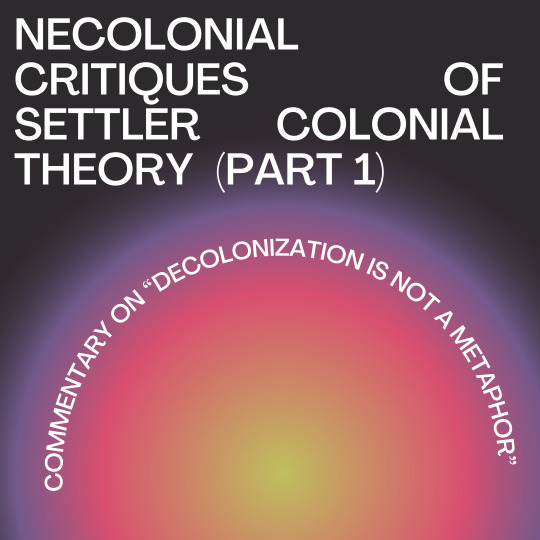
So this blog post will be a critique piece (part 1) of the essay “Decolonization is not a metaphor” which is basically an essay that centers the lens of settler colonial theory (there are different theories/frameworks and I will quickly define them in the paragraph following this one) and I have nothing AGAINST settler colonial theory or post-colonial theory at all and I can actually get down with much of what they point out and discuss, but as someone that has been taught neo-colonial theory, I still think that there are some things I would like to pull apart, discuss, and critique (also I don’t want to seem like I am attacking anyone, that is not the purpose of this blogpost). I am also just giving my personal informed opinions on this topic, especially as it relates to the prison industrial complex and the topic of decolonization from a more neo-colonial perspective.

What is settler colonial theory and what other theories are out there?
Settler colonialism - specific form of colonialism whereby an imperial power seizes Native territory, eliminates the people by force, and resettles the land with foreign, invading population. (Red Nation definition)
Post colonialism - the critical academic study of the cultural legacy of colonialism and imperialism, focusing on the human consequences of the control and exploitation of colonized people and their lands. (Wikipedia)
Neo-colonialism - a variant of colonialism which does not rely on physical force. Rather, it uses cultural and market influences to create resistances against decolonization and enforce integration into a core imperialist economy (globalization); the use of economic, political, cultural, or other pressures to control or influence other countries, especially former dependencies. (The Red Nation; Oxford Languages)
I would like to think that neo-colonialism is a theory/framework that really pulls apart how our society is currently structured, especially as it relates to capitalism. As the devastating consequences of market influences continue to destroy the land, I would like to think that these things aren’t just a concern for indigenous folks themselves, but basically everyone at this point, especially considering the whole climate change situation. But let us continue on with some of the critiques I have/some thoughts I’ve been having.
“Who is and is not a settler?” and is that as relevant as we think it is anymore?
instagram
I just want to point out that although white settlers are problematic (I’m talking Jeff Bezos, Zuckerberg, etc.) I also think that who is/isn’t a settler can become irrelevant up to a point and in certain situations. Non-settlers are very capable of upholding settler identity because of their social positionality in any given imperial nation (i.e. defense of privilege/property, access to resources and/or education, etc.). In “Decolonization is not a metaphor”, Tuck and Yang state
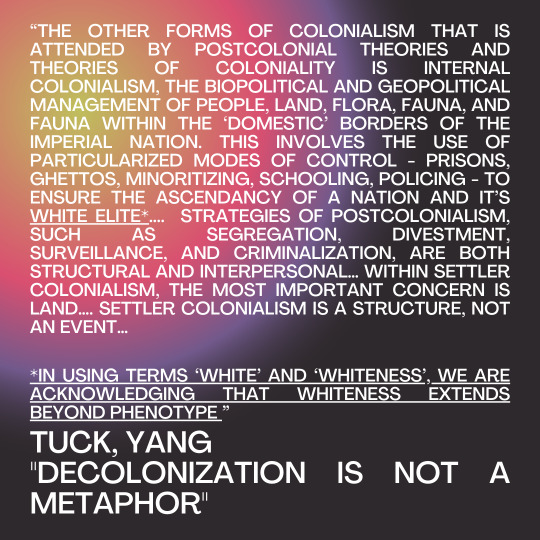
“The other forms of colonialism that is attended by postcolonial theories and theories of coloniality is internal colonialism, the biopolitical and geopolitical management of people, land, flora, fauna, and fauna within the ‘domestic’ borders of the imperial nation. This involves the use of particularized modes of control - prisons, ghettos, minoritizing, schooling, policing - to ensure the ascendancy of a nation and it’s white elite*.... Strategies of postcolonialism, such as segregation, divestment, surveillance, and criminalization, are both structural and interpersonal… Within settler colonialism, the most important concern is land…. Settler colonialism is a structure, not an event…
*in using terms ‘white’ and ‘whiteness’, we are acknowledging that whiteness extends beyond phenotype ”
Although I don’t disagree that whiteness extends beyond phenotype, I do disagree with this idea that some Indigenous folks, that are very much at least mixed race or multiracial, get to completely distance themselves from “whiteness” solely based on this consensus that whiteness goes beyond phenotype, especially since there are a lot of Indigenous folks that look basically white. It is very clearly both phenotype and positionality within the hierarchy of capitalism. This is something that is very apparent to me because of the prison industrial complex (which is in fact a structure that is part of the colonial state and is dependent on complex networks, capitalism, and racism). I think that there are a lot of indigenous folks that don’t want to realize that they do in fact benefit from whiteness and colonial nationhood because of phenotype, but I also think that there are folks that don’t want to admit that they also benefit from colonial nationhood because of their class. A lot of this has to do with some folks' relationship with policing; having any type of white privilege, whether that be phenotype or class, has it’s benefits because you suffer a lot less from the structures imposed by colonialism, like the prison industrial complex (especially in the context of the United States). So, let’s talk about what whiteness actually is and how Indigenous, Black, and other POC end up participating in this problematic system unconsciously.

Defining whiteness, white passing, and white privilege
Racial passing - occurs when a person classified as a member of a racial group is accepted or perceived ("passes") as a member of another. Historically, the term has been used primarily in the United States to describe a person of color or of multiracial ancestry who assimilated into the white majority to escape the legal and social conventions of racial segregation and discrimination. (Wikipedia)*
*note~ since this is a Wikipedia source, I will link to the article where it’s sourced from and the sources from there, which are: [a] [b] [c] [d]*
-- successfully white passing individuals may have access to economic security, safety, and the avoidance of stigma
There are white passing folks (which is term used for Black, Latinx, Indigenous, and Asian folx) that may not look fully “Anglo-Saxon white” but still have white privilege(s) and participate and reinforce colonial systems from their “perceived proximity to whiteness”, regardless of racial presentation, appearance, and/or identity. This is not to say that white passing folks don’t experience racism or oppression to a certain extent, but they do however experience less of it. Because of Black, Latinx, Indigenous, and Asian folks that take up space in the middle and even upper class, they benefit from white privilege because of their social conditions and some folks that are not middle class still have white privilege because of being mixed or multi-racial, since these are all benefits that come from settler colonial nationhood.
In regards to how this relates to Indigenous folks and the prison industrial complex, this article talks about how
“For many multiracial adults, their experiences are similar to those who identify themselves as single races. For example, 40 percent of mixed-race adults with a black background said they have been unfairly stopped by the police because of their racial background. However, only 6 percent of biracial white and Asian adults and 15 percent of white and American Indian adults said they have had this experience.”
and the study that this article talks about I will link here.
However, I also would like to point out that it isn’t just race that drives the prison industrial complex, class also plays a role in this system, and if you so happen to not be low-income or on the poverty line this gives you a perceived proximity to whiteness, regardless if whether you actually look racially Black, brown, Indigenous, or Asian. According to this study,
“Privilege is inherent within any construction of whiteness”
and that
“whiteness can be defined as a set of practices that function to protect and maintain privilege, while others define whiteness simply as the experience of privilege”.
Hence why the term was made for Black folks in the middle class along with other POC. This article talks about how socioeconomic status plays a huge role in a lot of Black folks overrepresentation in the criminal justice system, according to Nathaniel Lewis who conducted a study at the People’s Policy Project. Lewis claims that economic oppression matters first. Lewis found that
“ ‘Though for all but one of the seven models the effect of being in the middle rather than bottom class level was stronger than the effect of being white rather than black.’ In other words, middle-class and rich people were equally as likely to have served more than a year in prison regardless of race, but a poor black person was more likely than a poor white person to do so.”
So I would just like to point out that having money does give you white privilege, especially when it comes to being imprisoned by the colonial state.
Regardless of all of this, Black, Indigenous, Latinx, and Asian folks still disproportionately consist of jail populations.
I just want to point out that touching on nuance, especially as it relates to the prison industrial complex and colonialism, is extremely important and should not be ignored or dismissed. I think that instead of trying to police who is white/settler and who isn’t is quite frankly not helpful. I personally think that oppression has a lot to do with race and capitalism together and it is not one or the other.
Since this blog post turned out to be very long, I will be doing my criticisms in parts so this will inevitably have ~to be continued~.
#Instagram#prison industrial complex#decolonization#indigenous#indigenous theory#neocolonialism#settler colonialism#post colonialism#education#accessibility#white passing
41 notes
·
View notes
Photo

Jungle Book (1942)
For a few years in the early 1940s, a young actor of Indian descent was a household name among American moviegoers. His name was Sabu Dastagir (better known as simply “Sabu”), and he debuted in Robert Flaherty’s The Elephant Boy (1937). Sabu’s performance in The Elephant Boy was enough to convince Hungarian-British producer Alexander Korda to have the young Indian actor star in the 1940 remake of The Thief of Bagdad and, two years later, Jungle Book. Sabu did find film work after his two most iconic motion pictures, but these opportunities proved harder to find in the United States than in Britain. Almost eighty years later, Sabu remains only one of a handful of actors of South Asian descent to achieve even the briefest Hollywood stardom.
As an adaptation of Rudyard Kipling’s The Jungle Book, this is a Korda brothers’ production – eldest brother Alexander produces, middle brother Zoltan directs, and youngest brother Vincent is the art director. Many readers’ point of reference to Kipling’s work is most likely Disney’s animated musical from 1967. Compared to the Disney animated feature, the Korda Jungle Book, distributed by United Artists, is more interested in Mowgli’s interactions with humans, rather than the animals of the jungle. In a time when Technicolor was still relatively new, this Jungle Book contains some of the best use of color in an early 1940s movie. Beyond than the eye-catching palette and then-innovative visual effects, this Jungle Book loses its way anytime Sabu or the wildlife are not on-screen. The original source material, a reflection of Kipling’s imperialist and racist attitudes, also transfers some of those values to this screen adaptation (not related to the plot but in a similarly concerning development, Sabu is the only actor of South Asian descent in a cast almost entirely donning brownface).
In the prologue, an elderly Indian man named Buldeo (Joseph Calleia) regales his fellow villagers and anyone else in the area with tales of the past. When a British woman stop to listen, Buldeo begins the story of Mowgli and how the young boy, raised by wolves and a product of the jungle, came to reintegrate into human society. Unlike Disney’s two Jungle Book adaptations, the Korda Jungle Book cares more for Mowgli’s relationships with humans as opposed to that of the jungle animals. The tiger Shere Khan and the snake Kaa (voiced acted by Mel Blanc) garner plenty of screentime in the film’s closing scenes. But fans of Mowgli’s closest friends – the bear Baloo and the black panther Bagheera – might be disappointed, as they only have glorified cameos. In place of this focus on animals, this film spends ample time on Mowgli’s developing relationships with his mother Messua (Rosemary DeCamp), Buldeo, and Buldeo’s daughter Mahala (Patricia O’Rourke).
The exotified rural India that appears in Jungle Book overshadows most everything about this adaptation, including Sabu’s starring role. That Zoltan Korda, United Artists, and London Films felt no need to cast any other actors of South Asian descent for Jungle Book exemplifies the casual racism that permeates the narrative. The all-white cast playing noble half-savages or passive women is off-putting, fracturing one’s ability to feel as if the events on-screen are not taking place somewhere in sunny Southern California.
Jungle Book’s Indian setting came together at Lake Sherwood near Thousand Oaks, California and what is now known as Sunset Las Palmas Studios in Hollywood, which was then (and still remains) an independent production lot that hosts shoots for various television and cinematic works. Flown onto the sets were hundreds of fauna rented from local farms and zoos and tons of foliage (natural and synthetic), making the jungle scenes – despite the noticeable background or matte painting at times – feel vast and enclosing. And even though it is difficult to distinguish which scenes were shot indoors or outdoors, the amount of water, however improbably still it is in some parts, appearing in the film assists in immersing the audience into this dense environment. For all of the human settlements – in ruins or otherwise – production designers Vincent Korda and Julia Heron (1943’s Hangmen Also Die!, set decorator on 1960’s Spartacus) are not appealing to any sense of cultural understanding appropriateness. Yet the scope of their village and abandoned temple sets are tremendous, with an assist from the incredible matte paintings.
Cinematographers Lee Garmes (1933’s Shanghai Express, 1944’s Since You Went Away) and W. Howard Greene (1937’s A Star is Born, 1951’s When Worlds Collide) use of highly-saturated Technicolor features eye-catching images perfect for this unrealistic reality. Even in the darkest parts of the jungle, the explosion of emerald greens, cool blues, and other earthy colors feels anything but mute, a fantastical version of a rainforest brought to life. The jungle, despite the obvious artificialities in some of the foliage and fauna, almost becomes a character in the Korda Jungle Book. Other artificialities are a shade more convincing, most notably some of the effects required to capture animal movements. Using footage of both mechanical and actual animals alike, Garmes and Greene do their best to hide some strings and wires pulling along stunning mechanical snakes or to allow Bagheera and Shere Khan’s animal actors appear as if they are interacting with the events in the film. For the most dangerous animals that this production features, the black panther and tiger that played Bagheera and Shere Khan, respectively, were separated from the cameras by a glass barrier. This is immaculate visual effects footage, perhaps the film’s saving grace.
youtube
Contrast this with Laurence Stallings’ (1925’s The Big Parade, 1949’s She Wore a Yellow Ribbon) clunker of a screenplay. An inordinate amount of the dialogue is expository and declarative, and too many supporting characters speak in formalities with nary a shred of humor. Jungle Book’s narrative thus feels too formulaic, uptight, and unimaginative. When anyone other than Mowgli or the animals are on-screen, the film is a slog. Kipling’s literary influence on the film might not be apparent in how the humans speak, but it certainly comes through in the most perilous sequences in this movie – and that includes a scene of a forest fire that has to raise questions about animal endangerment on-set at a time with almost no laws against animal mistreatment on film shoots. The Kordas’ Jungle Book works best if seen as an extravagant picture book, but one wishes for Sabu, in a decent performance chockfull of glee, to talk a tad more to the animals.
Hungarian-American composer Miklós Rózsa (1940’s The Thief of Bagdad, 1959’s Ben-Hur) scores perhaps his best body of work owing to elements outside Western classical music. Rózsa’s score to Jungle Book is bolstered by the composer’s detailed research into Hindu music’s chord progressions and modes. His compositions and the orchestration come as close as possible to capturing the harmonic developments of Hindu music as one can while using a Western orchestra. Thus, one can imagine that the music for Jungle Book might be difficult for Indian and non-Indian audiences to appreciate. But as a harmonically complex take on Mowgli’s adventures in the jungle and among humans, this is a bold sound – occupying a space between the melodic demands and orchestration of the West and the wide-ranging tempo and virtuosic harmonic swirls found in classical Hindu music.
The closest analogue to the Kordas’ Jungle Book in this era of Hollywood history must have been the Tarzan series (1932-1948) starring Johnny Weissmuller as the character created by Edgar Rice Burroughs. That, however, is a fraught comparison to make. The Weissmuller Tarzan films were modestly-budgeted and its numerous sequels relied on increasingly laughable contrivances. The Kordas’ Jungle Book is an expensive motion picture leaning on its special effects wizardry while its narrative scarcely makes much of an impression. The premise of Weissmuller and Sabu’s legacies are upon a particular set of roles. By choice, Weissmuller took the roles of jungle-dwelling strongmen. The major Hollywood studios typecasted Sabu – against his wishes – as the urchin, usually a jungle-dweller, from an exotic Asian locale.
This Jungle Book is, for an older generation, a foundational film of their childhood (although I reject any attempts to label this as a children’s film) and an unmitigated technical achievement. In numerous ways, it is also a prime example of how Hollywood viewed Asian influences and actors of Asian descent for decades to come.
My rating: 6/10
^ Based on my personal imdb rating. My interpretation of that ratings system can be found in the “Ratings system” page on my blog (as of July 1, 2020, tumblr is not permitting certain posts with links to appear on tag pages, so I cannot provide the URL).
For more of my reviews tagged “My Movie Odyssey”, check out the tag of the same name on my blog.
#Jungle Book#Zoltan Korda#Alexander Korda#Sabu#Joseph Calleia#John Qualen#Frank Puglia#Rosemary DeCamp#Patricia O'Rourke#Ralph Byrd#Mel Blanc#Lee Garmes#W. Howard Greene#Rudyard Kipling#Vincent Korda#Julia Heron#Lawrence W. Butler#William H. Wilmarth#TCM#My Movie Odyssey
30 notes
·
View notes
Text
So What the Heck is Yaldev, Anyway? (A Pamphlet for the New, the Confused and the Curious)
Yaldev is an exercise in worldbuilding, the practice of creating fictional settings and fleshing out their details. It started with the idea of taking the creations of digital artist Beeple and adding written stories that set all of his work in a single continuity. That means everything you see here is part of the same fantasy/sci-fi world, a planet very similar to ours, but in a very different universe.
The Doylist premise: I use Creative Commons art by Mike "Beeple" Winkelmann, a digital artist who's made a piece every day for over 15 years, as writing prompts. I add short stories, lore blurbs and in-universe documents that set all of the art in a single fantasy/sci-fi world. Beeple specializes in landscapes and objects, so the natural result has been a narrative with the setting as "the real protagonist."
The Watsonian premise: Yaldev is a planet in a strange area of space where mana—the energy-substance that underlies all magic—flows freely between the Aether and the physical realm. The abundance of mana, "potentiality incarnate," has given rise to rich ecosystems and fantastic natural wonders, but also results in inherent chaos: spontaneous energy bursts, supernatural disasters, improbable mechanical failures. This severely limits the maintenance of large-scale infrastructure, and the four continents are blocked from mutual contact by perpetual mystic storms over the deep oceans.
There's many ways we could explore such a world, but we use the point-of-view of the Ascended Nation. This theocratic country invents towering engines that suppress the free flow of mana within a given radius… and then it uses the resulting infrastructural advantage to launch an imperialist project, both against other peoples and the nature of the world itself.
Setting aside, we have two main characters:
Acolyte Decadin, the magical engineer who invents the suppression towers and comes to regret it
Commander Bruzek, an ambitious Army officer who spends as much time fighting military bureaucracy as he does the Enemy
While Yaldev is theoretically military sci-fantasy, depiction of combat is extremely rare. Entries are more often snapshots of institutions, Earthlike fauna with fantasy twists, non-boring loredumps about the magic system, and the mechanisms, attitudes and horrors of Empire. Also there's a running gag about blowing up the moons.
Table of Contents:
Yaldev, the Project
Yaldev, the World
Yaldev, the Name
Yaldev, the Person
Additional Links
1. Yaldev, the Project
If you have no idea what was going on in the newest post, that’s totally normal! There’s a few things that can give new readers some trouble:
Because this project’s been going for so long, many of the new posts are building on old lore that was written before you found this place. You might see casual references to people, places and things you’ve never heard of. Sometimes the newest post is a sequel to one from years ago. Some people embrace the sense of mystery and discovery this creates, but it can also be frustrating.
Posts aren’t made in chronological order. We go wherever the art takes us, both in space and time.
Some aspects of this place are intentionally left vague or unexplored. Despite the narrative focusing on a powerful empire and its expansionist adventures, we rarely see the Emperor and the drama of his court, and most of the high-action warfare happens “off screen.” Those aspects are still there, but they’re unemphasized—the story isn’t about those things.
Despite all that, I’m not trying to make something super artsy or abstract here. I want you to get immersed and invested in this place, and that means it should be accessible, so if there’s something you don’t understand but think you should, I wanna help! I encourage you to shoot me a message or leave comments if you have questions. It’s no bother, I like talking about my writing and interacting with my readers!
If you feel like taking a plunge into the deeplore, consider checking out the timeline, where you can explore Yaldev at your own pace, starting from the start. As of this writing, putting all of Yaldev together like that makes it about as long as a typical novel, and I have no intention of stopping soon. Someday, but not soon.
2. Yaldev, the World
If you’re planning to experience Yaldev by reading the timeline, this section contains spoilers, so you might want to skip ahead to number 3. If you’re just gonna read new posts as they come out, and want more world-context to understand it, read on!
Yaldev’s a weird world, but much of that oddity is familiar. While I prefer to leave genre labels to critics and readers, I call Yaldev science fantasy, or sci-fantasy for short. It has themes, tropes and elements from both science fiction and fantasy. Some people think wizards are cooler than spaceships, and some think the reverse, but I think the prize goes to wizards on spaceships. Yet if we take our magic rocket to Yaldev, we find a place less whimsical than that imagery implies, but still too realistic to be grimdark.
Different cultures have different names for the world they call home, but Yaldev is the name used by the Ascended Empire. This regime is arguably the protagonist of our story, and we follow its quest to spread across this strange world without falling in on itself. Let’s take a look at each of Yaldev’s historical eras to get some idea of what’s going on here. I can only cover so much in a summary, so if something in a post still makes no sense, feel free to comment! I’ll try to help.
Pre-History: What makes this world so strange? For that, we have to understand magic. Current models of reality depict it with two layers. The one we inhabit is the physical realm, a cringey place of matter and energy which you’ve already experienced more than enough of. The other side is the Aether, a corresponding non-place that overlaps every inch of space in the physical. The Aether is a realm filled with mana, the stuff of potential itself. These two layers are normally separate, but with enough effort, humans can pull mana into the physical realm and control its potential until only one possibility remains, which then becomes real by logical necessity—that’s all there really is to the art of spellcasting. In Earth’s universe, the physical world and the Aether are strongly blocked off from each other, making spellcasting seem all but impossible. But in Yaldev’s universe, the Aether is more accessible, so magic is much easier to discover, learn and perform.
What makes Yaldev special is that it lives in a strange area of space, where the barrier between the physical realm and the Aether is so thin that mana will flow freely between the two, without any prompting by humans. It often does this in the form of destructive beams, sudden explosions and rips in the barrier that divides the two layers. In its uncontrolled, “natural” form, mana is highly corrosive. Any matter it engulfs is dissolved into more mana. On top of this, when mana sits in the physical realm without anything to control it, it creates magical effects selected unpredictably from the list of potential changes it could cause—and as the amount of mana in any given place increases, so does the scope of those changes.
These qualities make mana chaotic and dangerous, and its presence is what makes Yaldev, a world otherwise quite similar to Earth, turn out so different. The abundance of mana creates unique landscapes, marvelous ecosystems and fascinating primitive cultures. It also means there’s a bunch of small moons that orbit impossibly close to the planet.
Early History: Any world is a complex place. Understanding it narratively requires a perspective from which to ground ourselves. We’ll be following the Ascended Nation, a unified kingdom occupying the entirety of Yaldev’s smallest continent, which they’ve self-indulgently named Origin. Brought together by a charismatic leader of citizens and armies (“the Highest Ascendant,” also the title for all subsequent heads of state), the Ascended Nation was blessed with favourable geography and prestigious learning institutions. Yet it was also plagued by internal sectarian conflict. While they all acknowledged the same pantheon, these different religions prioritized different gods, and thus different systems of morals and social standards.
As a newly interconnected continent enabled the spread of ideas and the clash of concepts, three faiths came out on top: the Deftists, followers of the pantheon’s great sky-god and protector of the world; the Eej-Landians, students of a more esoteric, poetic worldview that seems to sidestep the gods; and the Pelbeeans, zealots of an obscure star-deity who found disproportionate influence through their roles as traveling messengers and merchants. The cultural clash culminated in the Highest Ascendant approving the Progress Petition, a set of recommendations issued by the Pelbeean church. It certified their religion—now known as the Empirical Truth—as the official State religion. It also renamed the capital city after their god, and criminalized all competing belief systems.
The most important element of the Empirical Truth, as far as world history is concerned, is its hatred of mana. The Boundless Wisdom of Parc Pelbee, their holy text, describes mana as a chaotic flaw in Pelbee’s ordered creation. They point to its impact on civilization as evidence: magic was responsible for the vicious storms that stopped the Ascended Nation from crossing the ocean surrounding their continent; it caused supernatural disasters that shattered cities and drove crop failures; and worst of all, it was promoted by competing faiths as a tool for resistance. The Church always believed in exceptions, but these were concentrated in three areas:
The use of magic as a power source for machines,
Spells used by their own priests, and
Any magic used by the State, subject to the Church’s approval.
Fully unified under a central authority, the Ascended Nation saw a golden age of technological evolution. Along the way, they picked up a penchant for blowing up the planet’s moons to make space for their skyscrapers. But the magical nature of this world remained a bottleneck on their development: the oceans still could not be crossed, and the risk of losing construction projects to the Aether left most of the country underdeveloped. Without change, the Royal Family feared, the criminalized Old Faiths might rear their heretical heads, and the Ascended Nation might not survive.
Rise of a Hero: Its savior would come by the name of Decadin, an acolyte (student) at the Exodus Academy, the continent’s most prestigious university. He had an encounter with an oracle of the Old Faiths during his childhood, which greatly influenced his outlook on the world and his place therein. He was a multidisciplinary prodigy, blending disparate academic fields into a holistic understanding of the world. This applied everywhere, from his specialty in engineering to his theology. He was a devout follower of the Empirical Truth, and he combined the Church’s “magic is evil” message with the old “magic is natural” outlook of the outlawed religions.
Later in his education, Acolyte Decadin pursued Aethereal engineering: a niche field of study still in its infancy, concerned with a mechanical and mathematical understanding of mana, and seeking ways to minimize the damage it could cause. With his hybrid worldview, Decadin saw mana for what it was: a dangerous element, but one that could be controlled—perhaps, one day, even harnessed. He would go down as one of the most important people in world history due to a single invention: the Aether Suppressor, a “great floating disc” of crystal and metal that prevented mana from naturally entering the physical world within its aura. Even more exciting, its radius could be duplicated and spread with specialized suppression towers. As those structures were raised across Origin, the Aether Suppressor secured the fate of the Ascended Nation. While the rest of humanity struggled against an inherently hostile world, here was a country that had liberated itself, soon to reap the fruits of its freedom.
When suppression towers were built in the seas, they stopped mana from entering the area, and brought the magical storms to a halt. At last, the nearest continent was accessible, and the Ascended people would bring their gifts of stability to a new world.
The First Conquest: But the new world was content without these gifts. The Ascendants landed on the shores of Asteria, Yaldev’s largest continent, and waged war against Wojpier, the first country they ever encountered. Under the command of Dread Fighter Tarle, the Wojpieran military resisted the Ascended invaders, but these strange people from a tiny continent had an insurmountable technological advantage. When Wojpier surrendered, the Highest Ascendant followed the example of that ancient unifier of his homelands: he turned this conquered kingdom into a new province. Nation became Empire.
The Synthesis Era: With their presence in Asteria secured, the Ascendants took a moment to rest and solidify their rule over what would be their most important colony. Wojpier was one of the most powerful forces in Asteria, something the Ascendants only learned after the First Conquest concluded. Implementing advancements from Origin and combining them with Wojpieran expertise in different fields, the Ascended Empire pioneered technology that would look futuristic to 21st century Earthlings. The most important of these creations was the mana battery, the brainchild of Hylen Starwick, an Exodus professor born in Wojpier. These devices passively drew mana from the Aether and used it as a power source, even through the Aether Suppressor’s aura. Once the Empire had this infinitely-renewable source of energy, all else was possible—including modern computers, and from there, cybernetic enhancements for their troops.
The Second Conquest: After raising suppression towers to protect their new territory, and putting down a rebellion or two by these new Imperial subjects, the Ascendants continued their mission. They clashed against many other peoples: the nomadic Nuwons, the Fluuschian trading empire, and the denizens of Alregmodst, the land of the frozen South. Battles were won, positions were lost, soldiers died in the mud and heroes rose from the pits. But from here on I won’t get too deep into the gritty details—it’s much more fun to discover these things than have some Redditor explain them to you.
The Great Peace: Having claimed all the Asterian territory they could realistically expect to hold, the Ascended Empire took more time to secure its dominion, civilize its subjects and master the art of consent manufacturing.
The Third Conquest - Phase 1: The Ascended Empire’s campaign in Yaostay, the continent where mana was most abundant. Their contempt for the “savages” of this land was unshakeable, which led to their harshest Imperial policies. But their dismissal of the Other made them underestimate their enemies, and for this, the cost would be steep.
The Third Conquest - Phase 2: The Ascended Empire’s campaign in Oxado, a stagnant continent divided among five nations, each with long histories and ancient grudges. The only thing they despised more than each other was this Empire forcing its way into their lands. They were the most powerful peoples the Ascendants had ever encountered, and the resulting war would push both sides to the limit.
The Eternal Reign: Tired of war and satisfied with its claims, the Ascended Empire enjoyed the riches it had earned. With those bloody eras behind it, it learned to govern peacefully, and in the unification of so many disparate people, mankind was content. And so our story comes to an end, with the people of Yaldev cherishing their loved ones and enjoying their consumer lifestyles.
The Building Storm: [REDACTED]
The Collapse: [REDACTED]
Yaldev Reborn: [REDACTED]
The Journey: [REDACTED]
3. Yaldev, the Name
In-world, Yaldev (literally “all lands”) is this planet’s name in the Ascended tongue. Nobody in this world speaks any language from Earth, so much of what you see falls under the purview of translation, with all the difficulties that arise from this. Some of these names are slightly edited to make them easier for English speakers to pronounce. Others have been renamed entirely to something that carries the same significance to contemporary audiences as the original name does to people from Yaldev. For example, the Exodus Academy is actually named after the founding myth of the Ascended Nation, so I’ve rendered its name as something which has the same significance and feel for “Western readers” (whatever that means).
Out-of-world, this project was originally named Y’all’d’ve. I got my start in Reddit’s worldbuilding communities, where the idea of authors adding needless apostrophes to words so they’d look more “exotic” was a meme. I parodied this by naming my project after an actual English contraction for “you all would have.” It was a fun in-joke, but as my writing started taking on darker themes, it felt less and less appropriate to use a meme name while talking about serious issues like colonization and genocide, so I modified the spelling while keeping the same pronunciation.
4. Yaldev, the Person
Yaldev is written by Ulysses Maurer, a Canadian shitposter in his early 20s. He’s pursuing a double major in business and English, specializing in rhetoric, digital media and writing. He works on Yaldev to improve his skills and expand his audience for future projects—his purpose is to bring life to the characters, stories and worlds that have inhabited his brain since childhood, and this goal guides most of his life decisions.
Nothing makes him happier than seeing others appreciate his work. He remembers talking about his fantasy nonsense to his grade school friends, and the joy he felt when they’d listen, remember it, and sometimes even talk about it to each other. It’s the same feeling he’s trying to reclaim as an adult.
When he’s not writing, Ulysses enjoys Magic: the Gathering, D&D, educational YouTube, having objectively correct opinions, thinking about video games (but not playing them), and writing third-person bios about himself like a pretentious asshole. He should read more.
5. Additional Links
All Entries in Chronological Order
Hate T*mblr? Perfectly reasonable! Here’s the other pages I run Yaldev from, if you’d rather see new updates there:
Reddit!
Instagram!
Facebook!
Twitter!
More goodies:
My interview with Starscript Legends!
The Mortal Essence, my first ever published fiction! It’s on page 31, 2300 words.
Artist's website!
Mystery link...
1 note
·
View note
Photo





Clifton Gorge, Late Snowfall, 3/18/2019
There is something special about getting photographs of the delicate snow trillium and harbinger of spring covered in ice and snow. It’s like winters final goodbye before everything is awoken during the thaw and the warmer soils break dormancy. Ramps are flooding the woods right now as we speak and the blue bells have started to make flowers along with the members of Papaveraceae, specifically the fumewort tribe. The next month is my favorite time of the year, Davis memorial, RRG, Chateau Nivale, Clifton Gorge, Versailles, and Clifty Falls all start waking up. If I get a chance I’de like to go to Adams county, Ohio and Louisville Glades to look for little glade cresses, Each major glade system is different and has it’s own specific species of glade cresses that managed to manifest themselves about 15,000 years ago, which is fast in terms of evolutionary time. The seeds themselves are theorized to have arived in these glades via the extinct Giant Woodland Bison of the late Eocene through the early to mid Anthropocene. The Lower Dryas period is when the Clovis were the most active and caused the first mass mega fauna extinctions of North America. We did the rest, eliminating mating regions and prairies, and lets not forget about the time of Andrew Jackson Jihad, a sort of pre-eugenic christian(not real Christianity based, but the bastardization of it that was spurred on by zealot like interpretation of whats supposed to guide morality loosely, similar to the same Christianity that allowed for crusades and our modern systems of war to manifest in imperialist conquest for some resource.) crusade that also applied to land development conquests. During this period, under Andrew Jackson idealism, we took open port style trains out west and just fucked up entire bison populations by shooting them trainside with rifles to fuck over the Native American’s who used bison for food. The Great Bison War, is what we called this.
Right now is a critical time to study ecology in forest relics and virgin habitat, the winter thaw and freezing not only spurrs on vernal dam, a nutrient dynamic critical to plant survival, but also aerates soil by moving roots and plants to the surface by frost heaving, I want to see how much this frost heaving effects our native glade species in comparison to normal contractile root ephemerals whom’stv’e adapted to large frost thawing.
. Since travel is limited, in a week or so I will be not able to see this valley come to life, I am also going to try not to make it down to rrg as much as I would like after this week due to covid 19 so my content is most likley going to be lacking, I plan on doing words of the day, or educational text posts with a few pictures to not become to stagnant.
#botany#plantblr#history#trillium nivale#trillium#erigenia#erigenia bulbosa#ohio#nature core#naturecore
7 notes
·
View notes
Note
You know, the Galactic Republic may be a democracy, but the way it goes about its business. The way it uses the Trade Federation to explore and colonize new worlds and then pull their resources back into the core world. It’s sort of a sign of expansionist Imperialism, isn’t it? Kind of what Britain did with the East India Company in Asia?
Imo, theRepublic is only a democracy by GFFA standards. It simply does not work as aperfect analogy for any democratic (or not) local government we have on Earth.It only works thematically, which is why we can compare it with so many kindsof governments/corporations. Thereare similar elements because these elements are part of inspirations behind thefictional structure, so yeah, when it comes to things like greed, disregard forlocal cultures, racism and general exploitation of native fauna and flora, wecan find similarities. However, the same can be said about pretty much every government(past and present).
I don’tthink you are wrong about the Republic exploring and colonizing worlds, but I believethe difference between these two is in how and why it was done. In the Republic’s case,it was never the direct, official goal. It was more of a by-product of the its corruptionand inability to regulate the entire galaxy (btw, I’m talking about PT-eraRepublic here). It’s less about the senate actively trying to exploit theseworlds, and more about their willingness to turn a blind eye to a profitable, albeitillegal/immoral, situation.
That’s oneof the main differences between the Republic and the Empire. It’s a “cosmetic”difference. Both presented imperialistic traits, the Empire only legitimatized those traits. I mean, it makes sense the people who profitedfrom the Republic’s neglect ended up supporting the Empire.
26 notes
·
View notes
Text
Divided Region United by Caste Oppression
The South Asian region is looked at by the world with three intersecting interests. First, the region’s moderate development in infrastructure and welfarism. Second, the multitudes of diversity the region holds. And thirdly, the geopolitical tensions dominated mostly by India-Pakistan war. The troika of South Asia sits between development-culture-politics. However, other regional differences such as India-Nepal trade strife, India-Sri Lanka regional difficulties, Pakistan-Afghanistan do not account to sustaining disagreements. India, Pakistan and Bangladesh occupy overwhelming importance in the regional politics.
South Asian region is home to one fourth humanity of the world. Aside from human capital, there are flora, fauna and natural gifts that this region has as its treasure carefully handed down from over thousand years. Of the 8 countries that are part of South Asia there at least six known countries who retain experiences of age-old discriminations emanating from their native historical context. One of it is oldest surviving discriminatory tactic is caste. Human Rights Watch has identified caste like “corollaries” across South Asia in India, Nepal, Pakistan, Sri Lanka, and Bangladesh.
Caste inspired discrimination is not unique to India, although it offers most fertile space for caste like virus to take birth, thrive and contaminate every person in sight. The history of the region as such has a complex historical political-economy. That is why it is always insightful for one to detangle those past baggages by looking at the political space through the lens of subaltern, the working class, women, and the oppressed.
Each state policy heavily relies on the extraction of labor and abstraction of its value. In a society that hangs on to historical values as sacrosanct, distribution of labor’s value does not feature in its scope. How to credit someone for their labour who are meant to performing the duty as part of ordained duty? Asking for a favor in terms of service from lower considered body is a sin and therefore that body needs to be condemned. Such has been the practice for the most part in the region when it came to invasions and colonization.
Every religions and sects have developed anti-Dalit, casteist tendencies towards the lower considered others even if their scriptures do not have caste-based distinction. Six major religions have assimilated Vedic practices of discriminating people who are lowered as outcaste for their advantage. Although their scriptural doctrine discourages any form of discrimination Jain, Sikh, Muslim, Zoroastrians, and Christians have largely benefitted by assimilating with the caste system.
The hatred and fear of the lower considered caste assigns designated lowest job positions that has no respect and standard wage. The job of cleaning the filth, human waste and animal carcasses are single-handedly done by Dalits in India, Sri Lanka, Bangladesh, and Nepal. Due to the draconian rule of Taliban in Afghanistan there are no studies that could explicate the exploitation of caste bodies in the hyper-Islamist violence.
It is because of this the South Asian region is plagued with enumerable hurdles that have limited its overall development. On economic front the GDP per capita approximation is USD $ 7,600 while the US alone has GDP per capita at $60,000. In the global ranking on inequality, poverty and corruption, South Asian region stands as a leader in negative performance indexes.
The primary and secondary educational enrollment is sobering. However, when it comes to the breakup of caste, religion and gender one would see the apparent losses. For India, the Dalit student enrollment slides down from 81% in primary education to less than 11% in graduate education. The pass out rate for Dalit graduates is only 2.24%. In Nepal the primary education enrollment of Dalits and indigenous groups was 34% compared to their population of 57%. While in higher education it was merely 3.8% with a high dropout rate. College level graduation for Dalit in Nepal is depressingly 0.4% Completion of studies is equally low where gender plays an important part of disadvantaging Dalit females further. Along with this the Hill and Terai region's differences recreates more gulf.
Due to border related conflicts, the South Asian region has seen brutal wars since the departure of colonial powers. Luxurious spending on military aggressions makes it difficult to redirect some of those bucks for the social welfare and development of human capital as opposed to exploiting it in senseless battles. War and cross-border conflicts have been cornerstones of some of the hegemonic states in the region. What rationalizes one to impose such draconian policies? I think it is the inherent, imperialistic wishes aided with mistrust of Others.
Buddhist South Asia
There is possibly only one commonality that connects this vast region. It is the rich heritage of indigenously grown Buddhist culture. The Buddhist values have vast expanse over any other colonized religious, spiritual doctrines. And perhaps this is an ideal path to reimagine our current problematics. Buddha’s doctrine not only spread in this region, but it also prospered to give this region an iconic reputation.
In the spread of Buddha’s doctrinaire, through Ashokā one cannot see the colonized brutal invasions unlike other spiritual experiences. And it was Buddha who formally challenged caste on a macro level. It is to his credit that many anti-caste, and acaste initiatives were propagated in an otherwise oppressive Vedic caste society.
Through Buddha we can complicate the history and as well as geography of South Asia. It offers us an opportunity to reclaim a regional past that will usher a sense of belonging through expressions of solidarity and unity. As it stands, South Asia is a deeply divided entity. Apart from government sponsored scholarships and few SAARC-like annual initiatives there are not much people to people interactions. Much of it is mediated with stereotypes of each others propagated by the cultural industry and hostile governments.
Regional blocks like Latin America, Africa, Europe have a sense of belonging to the region. While in the South Asian context, one would not even acknowledge their nationality with the region. A balkanized, sovereign supreme identity of one’s nationalism—of whatever worth is strongly rooted in the individuated South Asian identity. At a recently held 2020 SAARC summit held over video conference, Pakistan's representative, health minister Zafar Mirza lamented, "SAARC region remains the least integrated region in the world". Mirza hoped SAARC can be used for "pooling of resources, expertise, and even financing".
South Asia still remains in a shadow of colonial powers and that is why perhaps the foreign sponsored NGO industry and other capital investment has an unequal balance of power. Development related issues like poverty, atrocity, caste discrimination, religious fundamentalism among others inform the region’s politics. To overcome this dependability and to preserve self as a united, strong block with a vast human reserve and natural abilities the region has every reason to aim for a solid economy rooted on people’s welfare.
This doesn’t happen because caste and its attitudes will continue to control our logics of operation. Caste creates mistrust and lack of faith. Due to this, there is no free sharing of knowledge and mobility of human capital. Caste produced insecure groupings amongst its own citizens in a national framework. Each South Asian country takes itself back every time it employs the creative labor and hardworking individuals to the designated caste jobs. A Brahmin becoming priest, a Baniya holding business and a Dalit or Adivasi doing the inhumane jobs of polluting nature becomes an unnatural organization of productive economy.
This then legitimizes the authority and power brokers to certify their discrimination upon the huge mass of people who could have been trained, equipped and prepared for more innovative tasks. Caste system not only deprives one from exercising their fullest potential, but it creates more barriers for a society to grow as a collective. This then puts the pressure on select few who have taken the responsibility to run the economic affairs. By not including a huge mass of people in formal employment the economic and social elites continue to bear the burden of huge taxes. Caste system disadvantages their own purse, yet the powerholders of caste regime involve in the sadist action of imposing caste punishments upon its own citizens at the cost of their own social, economic worth.
One day this has to end, and it will end. And when the time of reconstructing the society will arise the people who are enjoying their unearned, aristocratic privilege will have to go back and check their vile acts that have imposed such harsher measures on fellow humans. It is upon everyone to eradicate caste; however, the onus is more on the privileged ones as they are most invested in it.
This article is written by Dr. Suraj Yengde, who is an author of bestseller ‘Caste Matters’ and a fellow and postdoc at the Harvard’s Kennedy School.
Naya Patrika Daily published its Nepali translation: https://jhannaya.nayapatrikadaily.com/news-details/911/2020-03-21
1 note
·
View note
Text
Me, @ the wealthy imperial British landowners in the 1790s in the Caribbean who, despite living near diverse communities of residents with knowledge of the land and despite technically controlling vibrant tropical ecosystems, were still fixated on sugarcane and so they purposely ignored local ecology and native island vegetation, and purposely ignored advice from both their own imperialist scientists and local plant experts to diversify the plants growing in the soil, in order to maximize profit from their non-native or unsustainable industrial-scale monoculture crops like sugarcane, but they ended up destroying the soil, ostracizing their best political allies, creating a trade war with their closest business partners, doubling the price they had to spend on imports, and bankrupting themselves before then being too prideful to eat anything other than European food, refusing to cultivate “tropical” or “native” food plants, so then they panicked and lost even more money desperately trying to import other redundant European plants unsuitable for the climate, which also inadvertently inspired slaves to create their own autonomous food gardens and informal markets which allowed women, the enslaved, and the poor to build independent foodsheds and social networks that supplied the foundation for eventual uprisings, rebellion, and emancipation: “Congratulations, you played yourself.”
Imperialists will be like “let’s ignore local ecology for the sake of profit.” But then sometimes they’re too prideful or oblivious to respect local ecology even when it’s clearly in their best interest and would actually grant them much more money and power. And then: “Oh no, there’s a rebellion.”
Like this:
--
This is a story of the Caribbean’s globalization, but it’s all the more remarkable for the planter’s resistance to becoming local to the tropical environment. Far from embracing the plant diversity of the tropics, wealthy European planters homogenized the landscape in a process of early environmental globalization. They perceived a crisis in the food supply because of their own inability to adapt their consumption practices to the ecology of the local landscape.
[T]he environmental and social transformation of the Caribbean sugar islands is instructive here -- by the time the English had wrested Jamaica from the Spanish in the seventeenth century [...] the island’s flora and fauna had been radically transformed with the introduction of sugar cane, plantains and bananas, coffee, indigo, and other crops from African trade routes. Few of the remaining indigenous plants were utilized in an expanding external market economy with the exception of small plots of cassava, sweet potato, and the pimento. As sugar cane is one of the most demanding crops in terms of its consumption of labor and soil, even in the more diverse ecologies such as Jamaica, it consumed most of the island’s resources. [...]
Their construction of sugar monoculture contributed to their dependence on imported food items that ranged from pickled beef and pork, onions, potatoes, corn, flour, and salt cod. From Havana they obtained their cattle and horses, and from across the Atlantic they imported iron tools for plantation agriculture as well as their supplies of wool, leather, glassware, paints, paper and tobacco. As such, this particular class consumed and produced in British parochial terms rather than acclimating to the Caribbean’s diverse social and environmental spaces. [...]
Caribbean planters had no interest in diversifying their environment or economy when sugar was so lucrative. Lowell Ragatz has argued that having stacked the British Parliament with their interests, the Jamaican Assembly had created a trade war in the Atlantic to ensure that they had no competition from other sugar colonies, effectively destroying their own regional trade networks. [...] [lmao]
[T]e planter-historian Edward Long published his History of Jamaica (1774), which included an extended critique of the island’s dependence on external trade [...] [T]o facilitate the process, bounties were offered for the import of economic food plants. Banks’ Royal Society offered prize awards and gold medals for anyone who could improve the plant economy in the West Indies by importing consumable items such as olives, opium, cinnamon, nutmeg, indigo, safflower, sesame, vanilla, cloves, peppercorn and mango. [...]
The plantation slaves who cultivated indigenous and African staples in their provision grounds during their few precious moments away from the cane fields had little choice butto be imbricated in a globalization process. European planters cultivated African linguistic diversity in the fields, using globalization as a tool to establish mutual unintelligibility to reduce slave insurrection. Yet Caribbean planters were largely dependent upon the African and indigenous crops of the provision grounds, which were a vital component of the islands’ internal economies and were integral to the region’s transition to emancipation and independence. Fearing the process of tropical acclimatization associated with moral and cultural decay, the planters consumed European staples, perhaps to sustain a myth that they had not left temperate shores. [...]
Yet they also inadvertently supported a vibrant internal market economy in which slaves provided the majority of the region’s sustenance and gained significant amounts of currency, autonomy, and even freedom. By growing African and indigenous cultigens, the slave provision grounds and their internal markets contributed a vibrant, alternative economy to the monoculture of the plantocracy. Ira Berlin and Philip Morgan estimate that by the late eighteen century, over 10,000 Jamaican slaves attended the Kingston market on a weekly basis. The success of the markets caused planters to complain that a fifth to a half of the currency in Jamaica and the Windward Islands was in slave hands. Miles beyond the Euclidean geometries of the plantation, Barry Higman has explained, slaves were able to cultivate alternative concepts of spatial order [...].
---
Elizabeth DeLoughrey. “Globalizing the Routes of Breadfruit and Other Bounties.” 2008.
71 notes
·
View notes
Text
Ramblings on my country’s current state
I can’t believe this is already time for the Holidays, and the end of the year’s time off and celebrations. I’m glad, and thankful, that most people I love are still here with me, despite the many collective, personal, and professional losses that occurred in my life. In most people’s lives, I suppose.
Before rambling a bit on things, first I’d like to share some good piece of news. I have done all my medical check-ups, and recently received a non-malignant minor mass diagnosis in my left breast. Because of the fact that in my family, the majority of women either had some type of women’s health related cancer, treated it and got better; or died from these sorts of conditions, I was quite worried. Aside from the increasing levels of vaccination rates in Brazil (in spite of the government’s omissions and clear genocide attempt), that is the best ending-of-the-year news I personally could ask for.
That being said, I just couldn’t try to say goodbye to 2021 without expressing more of my thoughts about it, particularly from the viewpoint of someone who is actively doing her best to survive and protect the people she loves under Bolsonaro’s rule.
I have been even worse mentally before this nasty timeline, for I have lived within an abusive home during most of my life. Even so while I write this (in order to tend to a sick relative, I had to let go of my job as a teacher at a regular school, and started tutoring private classes remotely from mid-2020’s until the present moment, which was a dark time because until then, I’ve almost achieved my goal of getting away from the abusive people I still “have” live with). However, nothing has prepared me to survive this pandemic chaos whilst Bolsonaro had assumed the presidency. Nothing! And I live in the Global South, you guys...Lack of safety, unwritten night curfews, etc. is not far from our reach, even amongst a middle-class family where I come from.
Before the militia, the military forces, the mass media, and the nazi-inspired entrepreneurs of the extreme “free-market” ideology combined impeached Dilma Rousseff, our first democratically elect woman president, Brazil still had its share of many cumulative issues on all social spectrum; nonetheless, we were improving real living conditions for most people, especially for workers and the poor. The country I knew once then, it simply doesn’t exist anymore.
After the lawfare of the impeachment farce, and the legal and criminal prosecution of Lula (who was going to run for presidency after Dilma, both of them representatives of the Workers’ Party here), things began to escalate even further. Bolsonaro had already an advantage; Temer, Dilma’s Vice-President and the one who betrayed her for the sake of implementing a crusade against workers’ rights and people’s access to education, done most of the damage to urban existence way before our militia guy took over. From then onwards, everything else went downhill; first they started with attempting at genocide before the pandemic, with the native peoples around here.
Even with many territorial disputes, Brazil was up until then recognized as one of the few nations whose native peoples still existed in plenty, and weren’t mostly wiped out. Jair Bolsonaro was able to finish what the colonization and imperialistic conflicts could not entirely. Afterwards, they came for the rain forests. Then, for the flora and the fauna of other important Brazilian biomes, such as Pantanal. I remember it as if it was happening in front of my eyes today; during my presential classes, I witnessed days going black due to the forest fires. Guys, I cannot stress this enough: I live in São Paulo. The Amazon Forest, which is located in its Brazilian part in Amazônia state province, is miles and miles from here...Almost the distance between The UK and The Russian border of Europe. This all happened before the pandemic would begin, imagine that.
Of course 2020 would hit in here as well. If one were observant, and responsible, it was all a matter of looking what was already happening in China, in Italy, and then in the USA right after, and taking action. But we weren’t under the influence of a normal politician, even a horrific, right-wing one. Donald Trump might be just awful, and clearly draws inspiration and support from extreme right’s movements. Jair Bolsonaro, on the other hand, is the embodiment of what the media has called “Alt Right”, a fancy term for someone who is blatantly obvious a fascist in all facets.
We, Brazilians, were already deprived of our labor rights, our access to education (particularly high education), even our retirement laws were stripped from us. Seeing the native peoples’ and the forests’ burn broke my mind, my heart. Later on, the beginning of the pandemic times would tear me soul apart, too. Anyone with little to almost no common sense would get that it would be an impossibility to expect some kind of responsible act from them. What we could not anticipate were acts of direct commands to fully disseminate the disease and to contaminate all; the more, the better. If we hadn’t had a good public health system (which was under the government’s attacks, of course), our total death numbers and chronically ill patients of Covid-19 would definitely surpass America’s.
I try to manage my health, my sanity, by focusing on what I can do to improve my personal situation, the circumstances of the ones around me, and, surely, what I can actively do to contribute to the community. Nevertheless, the overral state of severe famine, unemployment, lack of stable career prospects, along with all I wrote about earlier, profoundly devastates me. Constantly. Good thing that Brazilian folks are more prone to getting the vaccine shots, though. Because that’s pretty much one of the few good news on our collective endeavors to share – even if it is an extremely relevant one in this ongoing Covid context.
Just imagine what we could have done with a good public health system, and the equal distribution of vaccines around the world. If only we’d had that.
That being said, there are days more difficult than others, and despite my efforts to remain realistically pragmatic (neither denying the negative impact of things, nor wanting to dwell on them in an entropy state), observing the regular citizen’s reactions to the pandemic’s ongoing altering conditions depresses the fuck out of me. We have already conquered so much, on simply being able to go outside when needed, or to tend to close friends & family with masks on, maintaining a safe distance between us. I understand that different from me, many folks relax by hanging out in large crowds. It’s terrible we can’t do it yet in their perspective, and I truly, truly get it. Still, normalizing agglomerations now continues to be outright unethical. Not addhering to using masks, too. This is not too much to ask for. Nor too hard to accomplish, considering everything we already went through, everyone we already lost.
Expressing sadness in here feels more of a crime than many horrific things I mentioned before. There’s a difference between wanting to rebuild a life responsibly, and living as if nothing has happened at all. More than the usual, I sense an on-growing hedonism in Brazilians, which is indicative of poor coping mechanisms, unethical behaviour, false perceptions of reality, and lack of social organization in order to provide collective solutions to our problems.
#pandemic tag#current state of affairs#brazil#brazil under bolsonaro#being a brazilian equals suffering#sharing personal thoughts#do not reblog
0 notes